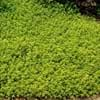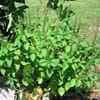Life Span
Annual
Perennial
Origin
Africa
Eastern Europe
Types
White Sesame, Black Sesame, Golden Sesame
Not Available
Number of Varieties
Not Available
Habitat
Cultivated Beds
Terrestrial
USDA Hardiness Zone
9-11
4-9
AHS Heat Zone
Not Available
9-1
Sunset Zone
Not Available
1a, 1b, 2a, 2b, 3a, 3b, 4, 5, 6, 7, 8, 9, 10, 11, 12, 13, 14, 15, 16, 17, 18, 19, 20, 21, 22, 23, 24
Habit
Upright/Erect
Clump-Forming
Flower Color
White, Pink, Lavender
Yellow, Lavender, Blue Violet
Flower Color Modifier
Bicolor
Bicolor
Fruit Color
Green, Brown
Not Available
Leaf Color in Spring
Not Available
Green, Sea Green
Leaf Color in Summer
Green
Green, Sea Green
Leaf Color in Fall
Green
Green, Sea Green
Leaf Color in Winter
Light Green
Light Green
Leaf Shape
Lanceolate
Lanceolate
Plant Season
Summer
Spring, Summer
Sunlight
Full Sun, Partial Sun
Full Sun, Partial Sun
Growth Rate
Very Fast
Medium
Type of Soil
Loam, Sand
Loam, Sand
The pH of Soil
Neutral
Neutral
Soil Drainage
Well drained
Well drained
Bloom Time
Indeterminate
Spring, Late Spring, Early Summer
Tolerances
Drought
Drought
Where to Plant?
Ground
Ground
How to Plant?
Seedlings
By dividing rhizomes, tubers, Seedlings
Plant Maintenance
Medium
Medium
Watering Requirements
Average Water Needs
Average Water Needs, Do Not over Water
In Summer
Lots of watering
Lots of watering
In Spring
Moderate
Moderate
In Winter
Average Water
Average Water
Soil Type
Loam, Sand
Loam, Sand
Soil Drainage Capacity
Well drained
Well drained
Sun Exposure
Full Sun, Partial Sun
Full Sun, Partial Sun
Pruning
Remove damaged leaves, Remove dead branches, Remove dead leaves
Remove damaged leaves, Remove dead branches, Remove dead leaves
Fertilizers
Apply N-P-K
All-Purpose Liquid Fertilizer
Pests and Diseases
Dry root rot, Phyllody, Phytophthora blight, Red blotch
Red blotch
Plant Tolerance
Drought
Drought
Flower Petal Number
Single
Single
Fragrant Bark/Stem
Yes
No
Foliage Texture
Medium
Coarse
Foliage Sheen
Matte
Matte
Attracts
Not Available
Hummingbirds
Allergy
Abdominal pain, Anaphylaxis, breathing problems, Mouth itching, Nausea
Skin irritation
Aesthetic Uses
Not Used For Aesthetic Purpose
Showy Purposes
Beauty Benefits
Prevents greying of hair, Remove blemishes, Speed hair growth
Not Available
Environmental Uses
Air purification
Air purification
Medicinal Uses
Astringent, Diuretic, Emollient, Nutritive, Tonic
No Medicinal Use
Part of Plant Used
Leaves, Seeds
Not Available
Other Uses
Used for making soaps, Used for producing cooking oil, Used in salads
Used as Ornamental plant
Used As Indoor Plant
No
No
Used As Outdoor Plant
Yes
Yes
Garden Design
Edible, Herb / Vegetable
Alpine, Edging, Mixed Border, Rock Garden, Wall
Botanical Name
SESAMUM indicum
IRIS pumila
Common Name
Sesame
Dwarf Iris
In German
Sesam
Zwergiris
In French
Sésame
Dwarf Iris
In Spanish
Sésamo
Enano Iris
In Greek
Σουσάμι
νάνος Ίρις
In Portuguese
Sésamo
Dwarf Iris
In Polish
Sezam
Dwarf Iris
In Latin
Sesamae
Iris Dwarf
Phylum
Magnoliophyta
Magnoliophyta
Class
Magnoliopsida
Liliopsida
Family
Pedaliaceae
Iridaceae
Clade
Angiosperms, Asterids, Eudicots
Angiosperms, Monocots
Tribe
Not Available
Irideae
Subfamily
Asternae
Iridoideae
Number of Species
Not Available
Not Available
Difference Between Sesame and Dwarf Iris
If you are confused whether Sesame or Dwarf Iris are same, here are some features about those plants to help you choose better. Many people think that these two plants have the same characteristics, but one can see Sesame and Dwarf Iris Information and learn more about it. Fertilizers required for proper growth of Sesame are Apply N-P-K, whereas for Dwarf Iris fertilizers required are All-Purpose Liquid Fertilizer. Hence, one should know the basic difference between Sesame and Dwarf Iris if you are planning to have them in your garden to enhance its beauty.
<
Flowering PlantsImportance of Sesame and Dwarf Iris
Want to have the most appropriate plant for your garden? You might want to know the importance of Sesame and Dwarf Iris. Basically, these two plants vary in many aspects. Compare Sesame and Dwarf Iris as they differ in many characteristics such as their life, care, benefits, facts, etc. Every gardener must at least have the slightest clue about the plants he wants to plant in his garden. Compare their benefits, which differ in many ways like facts and uses. The medicinal use of Sesame is Astringent, Diuretic, Emollient, Nutritive and Tonic whereas of Dwarf Iris is No Medicinal Use. Sesame has beauty benefits as follows: Prevents greying of hair, Remove blemishes and Speed hair growth while Dwarf Iris has beauty benefits as follows: Prevents greying of hair, Remove blemishes and Speed hair growth.
Compare Facts of Sesame vs Dwarf Iris
How to choose the best garden plant for your garden depending upon its facts? Here garden plant comparison will help you to solve this query. Compare the facts of Sesame vs Dwarf Iris and know which one to choose. As garden plants have benefits and other uses, allergy is also a major drawback of plants for some people. Allergic reactions of Sesame are Abdominal pain, Anaphylaxis, breathing problems, Mouth itching and Nausea whereas of Dwarf Iris have Skin irritation respectively. Having a fruit bearing plant in your garden can be a plus point of your garden. Sesame has no showy fruits and Dwarf Iris has no showy fruits. Also Sesame is not flowering and Dwarf Iris is flowering. You can compare Sesame and Dwarf Iris facts and facts of other plants too.





